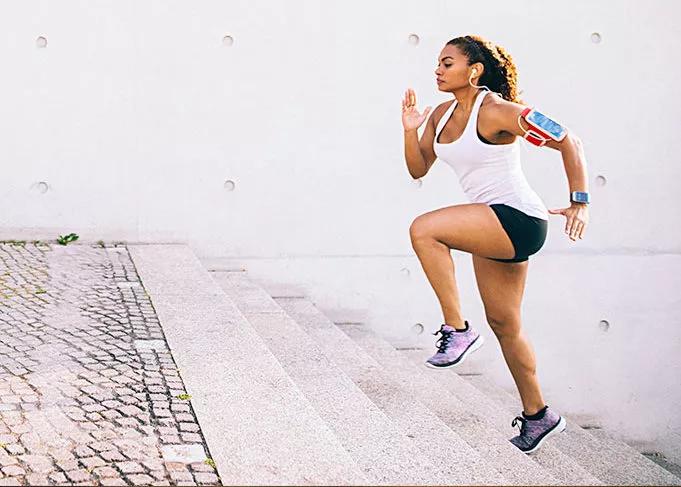Perfect your running style to avoid injury & improve your time

From casual joggers or power walkers to serious marathoners — you can improve your efficiency and avoid injury through a simple test called a gait analysis.
Advertisement
Cleveland Clinic is a non-profit academic medical center. Advertising on our site helps support our mission. We do not endorse non-Cleveland Clinic products or services. Policy
A person’s unique way of moving their body forward is called their gait. And although humans have been moving their bodies for millions of years, sometimes we tend to run or walk in a certain way that isn’t quite ideal.
For example, you might turn your foot inward when you run, take super short strides or maybe your wide arm movements are draining you of precious energy. If your running or walking form isn’t correct, repeating these motions over and over again could lead to injury. Incorrect form might also be holding you back from becoming faster or more efficient.
“A gait analysis is all about assessing your body mechanics and solving any biomechanical problems so that you can move better and avoid injury,” says exercise physiologist Christopher Travers, MS. “A gait analysis might even help determine the cause of an old injury.”
It’s easy to observe another runner and notice where their form is lacking (maybe they favor one leg over the other or turn their foot inwards) but it’s another thing altogether to try to adjust your own form.
If you’re injured, learning about your running style and foot strike can clue you into what might have caused the injury. Maybe it was your shoe choice or a muscle imbalance that caused the injury. If you’re not injured, but just looking to become a better runner or walker, a proper gait analysis can help you perfect your form so that you can become faster with less effort.
Advertisement
A gait analysis may involve using video and other tests to assess your body mechanics. The goal is to help you make changes to improve your efficiency. Doing this will help you determine the cause of any existing injuries while also preventing future ones.
During a gait analysis, a physical therapist or exercise physiologist asses several aspects of a runner’s gait through direct observation and sometimes through video technology. Often you’ll run on a treadmill to get the best viewing options.
The analysis can include reviewing your:
After a full assessment, you’ll learn what personal body mechanics issues you might have, what strength and flexibility exercises will help and you’ll walk (or run!) away with changes you can make to improve your gait pattern. All of this will lower your chance of injury and help you become a better runner or walker.
“If you’re considering undergoing a gait analysis, look for programs that offer a comprehensive evaluation that includes strength and flexibility assessments and video review,” says Travers.
Some programs also offer customized conditioning and training plans to target key improvement areas, education on body mechanics and physiologic capabilities, rehabilitation for injuries and coaching.
Extras may include testing your body composition and VO2 Max, which measures the maximum amount of oxygen that you can use during intense exercise.
Armed with all of this data, exercise physiologists and physical therapists can provide detailed recommendations about your running technique, suggest strengthening and stretching programs and even offer advice on proper shoe selection.
So rather than guessing on your own how to better hold your body when you run or walk, you can get help from a simple assessment.
Advertisement
Learn more about our editorial process.
Advertisement

Using precautions like bandages and lubricants can help you run away from this uncomfortable condition

Reducing your pace allows you to log more miles and train your body for the stress of running

Running doesn’t cause knee arthritis, but you can take steps to minimize cartilage damage

Months of preparation go into readying your body to run 26.2 miles

A few precautions can keep your toenails from turning black and falling off

Your body’s natural response to starting workouts may include an urge to scratch

What you should know before hitting a race before the big Thanksgiving meal

As a training tool, ditching your shoes could help you build better running form to avoid injury

Start having sex about 72 hours before ovulation, then at least every other day during your fertile window

Attachment theory suggests that your earliest relationships shape connections throughout your life

It isn’t a recognized mental health disorder, but research shows that problematic social media use can negatively affect your mental health, self-esteem and sleep